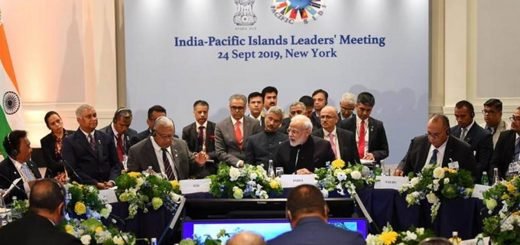Steps towards 4th Industrial Revolution: Indian Glimpes in the BRICS summit 2018

The 10th BRICS Summit held in South Africa from 25th-27th July 2018, discussed a wide range of regional, geopolitical and economic affairs. These nations have pledged ever since their formation about how each country will be a contributing factor to another country. With the changing times, every economy needs to move at the same pace and a major contributing factor to such adaptation is development.
The BRICS Summit 2018 adopted the Johannesburg Declaration which highlighted common issues of regional concern and reassured the pillars of democracy, inclusiveness and a global market. The biggest highlight of the declaration lies in the how these nations have expressed their support to China over the US-China trade war. They pledged unity in fighting the ongoing US tariffs and its move towards a unilateral society. Economists across the globe have analysed this statement and they claim that although the weight on US’s side is more in regard to these policies, the BRICS nations must continue to work towards the cause they took up. Alongside trade wars, the nations also took to continue their commitment in fulfilling the goals of the 2030 Agenda for Sustainable Development, whereby these nations try to bring out a balance between economic, social, political and economic factors. The BRICS Ministers of energy agreed with establishing the BRICS Energy Research Cooperation Platform which can further assist these countries in harnessing energy security and affordability thereby reducing the pollution issues. However, the countries too expressed their concerns over the ever-growing threats of terrorism and unanimously decided for the adoption of the United Nations General Assembly’s Comprehensive Convention on International Terrorism, which is yet to be finalised.
This year’s BRICS Summit saw India’s overpowering nature in all spheres of mutual benefits when Indian Prime Minister Narendra Modi swore to heavily contribute in the start-up of the 4th Industrial Revolution with the help of the other nation states. The theme of the BRICS Summit 2018 revolved around inclusive growth and shared prosperity in the 4th Industrial Revolution and the Prime Minister deeply mentioned about the government’s concerns over issues that still remain a challenge in the country. He mentioned of connected policies among the nation which will help him achieve his vision of the Industrial Revolution and greatly mentioned of all the skills, technology and multilateral cooperation that would be required in achieving the task. The fourth industrial revolution is expected to reach the deprived classes and help them uplift themselves and that an individual’s ‘talent’ will surpass the value of ‘money.’ These talents will be nurtured in school and university curriculums so that they know to harness the developing technology which would make job availability in the market easier for these individuals. The challenges for India will definitely be in terms of using its main resource, its youth and therefore the BRICS Summit 2018 wasn’t only the way of looking forward to another industrial revolution but also providing insights into the mechanisms that will bring the change.
Bringing BRICS and Africa together! PM @narendramodi speaking at the BRICS Africa Outreach and BRICS Plus Outreach : My government has given top priority to expand our historical efforts for independence, development and peace in Africa. pic.twitter.com/ZfL1mXhniH
— Raveesh Kumar (@MEAIndia) July 27, 2018
Off lately, India has been under US’s pressure on the whole oil import deal with Iran and also the arms import from Russia. The striking deal after the BRICS and how India has promised to help China with the trade war presents a dilemma to India. With the deadlock trade war, the country might again be forced to choose sides, jeopardising the bilateral relations with both the US and China. Considering the recent military concerns, Chinese President Xi Jinping and Prime Minister Narendra Modi held talks on better communication facilities in the border area which can help in maintaining peace and order around the bordering areas. However, looking at the positive side of this summit, India will move a step towards its developmental goals and be able to establish itself as a growing economy in the Asian subcontinent. Prime Minister Narendra Modi also met the Angolan President Joao Lourenco with whom talks were held on bilateral co-operation and people to people engagements between the two countries. The top priority of India’s foreign policy has always been Africa and the Prime Minister mentioned of how much the Indian government had spent in the African economy and that the country would continue investing. The two countries also released joint stamps to celebrate the legacy of Nelson Mandela and Mahatma Gandhi, the two greatest examples of non-violence and discrimination.
The BRICS Summit has definitely met its objective for the year, but such summits have now become not only platforms for political and economic representation of the nations but also a platform for developing ties between the countries that go beyond their geographical and ideological boundaries.
*Arijita Sinha Roy is Research Intern at The Kootneeti


















